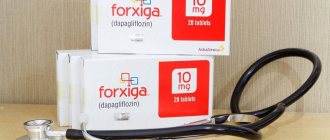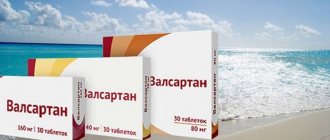Basic information about the drug "Elycea"
As mentioned above, the medication belongs to the group of antidepressants. It comes in the form of tablets, which can be round or oval.
The main active ingredient of the drug is escitalopram. As auxiliary components, it contains lactose monohydrate, crospovidone, povidone K30, pregelatinized starch, magnesium stearate, microcrystalline cellulose.
The product must be stored at a temperature of no more than 30 degrees. Its shelf life is 2 years.
In pharmacies "Elitsey", the price of which is about 1,400 rubles, is available with a prescription.
Elycea
Active substance:
Escitalopram*
Pharmgroup:
Antidepressants
Average price in pharmacies
| Name | Manufacturer | average price |
| Elycea 0.01 n28 tablet p/capt/shells | KRKA | 670.00 |
| Elycea ku-tab 0.01 n28 tablet disperg in half the mouth | KRKA | 593.00 |
| Elycea ku-tab 0.01 n56 tablet dispersed in half the mouth | KRKA | 1023.00 |
Analogs for the active substance:Miracitol Selectra Cipralex Escitalopram oxalate |
Contraindications for use
There are situations during which treatment with the antidepressant “Elycea” is prohibited. Instructions for use indicate the impossibility of taking the drug if the patient has:
- hypersensitivity to the components of the drug;
- carbohydrate metabolism disorders;
- lactase deficiency, galactosemia, glucose-galactose malabsorption syndrome.
In addition, the drug cannot be used in combination with medications containing pimozide, as well as during therapy with MAO inhibitors.
The antidepressant "Elycea" is strictly prohibited for use during pregnancy, lactation, and also in childhood.
special instructions
Treatment with this drug should be carried out with extreme caution if the patient has:
- diabetes mellitus;
- uncontrolled epilepsy;
- chronic renal failure;
- liver cirrhosis;
- cardiac dysfunction;
- depression with suicide attempts;
- bleeding tendency;
- history of hypomania and mania.
Another important point: “Elycea” and alcohol are incompatible! Therefore, you should refrain from using it, as well as from treatment with alcohol-containing drugs.
In addition, it is recommended to avoid performing work that requires a high concentration of attention and driving vehicles, since “Elycea” (reviews from users are proof of this) can cause dizziness, confusion, hallucinations and other side effects, which we will talk about later .
Rules of application
Next, it’s worth talking about how to take the drug “Elycea” correctly and in what dosages. The instructions for use highlight several possible options.
For depressive episodes, the initial dose is 10 mg per day, but if necessary, it can be increased to 20 mg. The effect is usually achieved within 2 to 4 weeks from the start of therapy. After the final disappearance of the symptoms of the disease, it is recommended to continue therapy for at least another six months to consolidate the achieved result. Treatment with the drug should be stopped for about 1-2 weeks, gradually reducing the dose. This is necessary in order to avoid the possible occurrence of withdrawal syndrome.
When treating panic disorders, the initial dose is 5 mg per day, and from the second week of treatment increases to 10-20 mg. As a rule, the maximum effect can be achieved after three months of treatment.
For patients over 65 years of age, the maximum permitted daily dose is 5 mg.
For kidney disease, no dosage adjustment is required.
For liver diseases, treatment begins with 5 mg, and after 2 weeks the dose can increase to 10 mg per day.
Compound
One film-coated tablet may contain depending on the dosage of the drug (corresponding to 5, 10 and 20 mg of escitalopram).
Content of inactive excipients:
- 53.61 / mg 107.22 mg / 214.44 mg lactose monohydrate;
- 3.75 mg / 7.5 mg / 15 mg crospovidone;
- 0.375 mg / 0.75 mg / 1.5 mg povidone K30;
- 7.5 mg / 15 mg / 30 mg MCC;
- 1.875 mg / 3.75 mg / 7.5 mg pregelatinized starch;
- 1.5 mg / 3 mg / 6 mg magnesium stearate.
Opadry white shell composition 33G28707: 40% hypromellose 6cP, 24% titanium dioxide, 22% lactose monohydrate, 8% macrogol 3000 and 6% triacetin. The mass of the shell in accordance with the above dosage is 1.875 mg / 3.75 mg / 7.5 mg.
Side effects
Almost any drug can provoke the appearance of any negative reactions in the body. Elicea tablets were no exception. Side effects from taking the drug may be as follows:
- Nervous system: dizziness, tremor, drowsiness or insomnia, restlessness, anxiety, paresthesia, nightmares. Less commonly, fainting, sleep disturbances, psychomotor agitation, panic disorders, taste disturbances, confusion, teeth grinding, suicidal thoughts and behavior, manic and convulsive disorders, aggressiveness, hallucinations, depersonalization, serotonin syndrome may be observed.
- Digestive system: decreased or increased appetite, diarrhea or constipation, nausea, vomiting. In rare cases, gastrointestinal (including rectal) bleeding and hepatitis may occur.
- Hematopoietic and cardiovascular systems: tachycardia, bradycardia, orthostatic hypotension, thrombocytopenia.
- From the respiratory system: sinusitis, yawning, nosebleeds.
- Genitourinary system: anorgasmia (in women), impotence, decreased libido, ejaculation disorders. Menorrhagia, metrorrhagia, priapism, and urinary retention are much less common.
- From the senses: tinnitus, visual disturbances, mydriasis.
- Endocrine system: in rare cases, inadequate production of antidiuretic hormone is possible.
- Musculoskeletal system: myalgia, arthralgia.
- From the skin: alopecia, excessive sweating, and in very rare cases - ecchymosis.
- Allergic reactions in the form of rash, itching, urticaria. In some cases, anaphylactic shock or Quincke's edema may occur.
- General: the appearance of weakness, swelling, increased body temperature.
As for laboratory indicators, “Elycea” (tablets) can provoke an increase in body weight, and in more rare cases, a decrease in weight.
If treatment with the drug is abruptly stopped, withdrawal syndrome may occur.
As you can see, the antidepressant "Elycea", the price of which is quite high, has a number of side effects. Moreover, some occur quite often.
Overdose
Symptoms of taking overdoses of Elicea
Dizziness, agitation, drowsiness, convulsions, tremor, serotonin syndrome, depression of consciousness of varying severity, aggravated by alcohol and/or other substances that depress the functions of the central nervous system, as well as nausea, vomiting, tachycardia, decreased blood pressure, changes in the ST segment electrocardiogram, QRS expansion, T waves, increased QT, arrhythmia, respiratory depression, hypokalemia, hyponatremia, metabolic acidosis, rhabdomyolysis.
Symptomatic and supportive treatment
Most often it includes gastric lavage, the use of activated carbon, ensuring airway patency, adequate oxygenation, constant monitoring of cardiovascular and respiratory functions. A specific antidote has not yet been found.
Reviews about the drug
What do patients say about the antidepressant "Elycea"? Reviews from users talk about both the advantages and disadvantages of the drug. Let's look at each group separately.
It’s worth starting with the advantages that Elicea tablets have. Reviews from users indicate that the drug has a rapid effect, as a result of which the positive effect of therapy occurs in a short time. In addition, the drug is easy to use and relatively low cost compared to other antidepressants.
But there are also some disadvantages. The drug "Elycea" (reviews of those taking it repeatedly confirm this) has a number of side effects, which become even more noticeable if the dose is incorrectly selected. Most often they manifest themselves in the form of a rash and severe itching. In addition, in some cases the remedy did not show any result at all, and it was necessary to look for another medicine. Some patients complain of increased appetite after discontinuation of the drug, which contributed to rapid weight gain.
Analogues of the drug
As you know, almost all pharmaceuticals can be replaced with some other medicine. “Elycea” was no exception. Analogs of the drug have a similar type of action, but differ from it in their composition and some other characteristics. Let's look at the two most well-known products: Selectra and Cipralex. Instructions for use, price, reviews and side effects - these are the issues that will be given special attention. For greater convenience, each of the drugs will be discussed in a separate section.
"Selectra": instructions for use, price, reviews
Just like Elicea, Selectra belongs to the group of antidepressants. The drug is available in the form of white oval tablets.
The main active ingredient of the drug is escitalopram. As auxiliary components, Selectra contains microcrystalline cellulose, magnesium stearate, croscarmellose sodium, silicon dioxide and talc.
The drug is used to treat depression of varying severity, as well as during panic disorders, including those accompanied by a fear of open space.
The use of Selectra is contraindicated during pregnancy and lactation, under the age of 15 years, in the presence of hypersensitivity to the components of the tablets. In addition, the drug is not used in combination with MAO inhibitors.
The antidepressant is used with extreme caution if the patient has diabetes, kidney, heart and liver diseases, as well as a tendency to bleeding.
The required daily amount of the drug depends on the type and nature of the disease. As a rule, the initial dose is 10 mg, but if necessary it can be increased to 20 mg.
Exceeding the dose of an antidepressant provokes drowsiness, clouding of consciousness, motor agitation, convulsions, tachycardia, arrhythmia, renal failure, and hypokalemia.
The development of side effects after using Selectra is usually observed within the first two weeks after the start of therapy. They may manifest themselves in the form of weakness, dizziness, movement disorders, convulsions, tremors, fever, drowsiness or insomnia.
Less commonly, taking this antidepressant can cause panic attacks, hallucinations, confusion, increased irritability, manic disorders, taste disturbances, diarrhea or constipation, itching and skin rashes, decreased appetite and libido.
Abruptly stopping the use of the drug may cause withdrawal syndrome, which is characterized by nausea, headaches, and dizziness.
The cost of the product is within 1000 rubles. Reviews about it are most often positive, although in some cases patients complain of some side effects: irritability, insomnia and loss of appetite. But in the end, they too are satisfied with the results achieved.
Pharmacodynamics and pharmacokinetics
Escitalopram is an antidepressant and selective SSRI inhibitor that increases the level of neurotransmitters in the synaptic cleft by inhibiting the reuptake of serotonin molecules by neurons, enhancing and prolonging the effect of serotonin on postsynaptic receptors. For escitalopram, it is practically not characteristic or very weakly expressed - affinity for receptors such as serotonin (5-HT1A and 5-HT2), dopamine (D1, D2), α1-, α2-, H1-histamine, benzodiazepine and opioid, β-adrenergic receptors , m-cholinergic receptors, as well as to ion channels (for example, Na+, K+, Ca2+, Cl-. This gives weak anticholinergic, sedative, and cardiovascular side effects.
Suction
The absorption process does not depend on diet, bioavailability is 80%. With repeated use, the maximum concentration is achieved after 4 hours.
Distribution
The kinetics are linear, oral dosage leads to an apparent volume of distribution (the volume in which the active substance can be present) of approximately 12–26 liters per 1 kg. The binding of escitalopram and its metabolites to plasma proteins occurs by 80%. Steady-state concentrations can be achieved after 1 week, usually taking a daily dose of 10 mg gives an average of 50 nanomol/l.
Transformation
Metabolized in the liver to 2 pharmacologically active metabolites of demethylated and didemethylated escitalopram, which, together with the main substance, are partially eliminated in the form of glucuronides. Metabolism occurs predominantly with the participation of isoenzymes CYP2C19, CYP3A4, CYP2D6 of the cytochrome P450 system.
Removal
Half-life is approximately 30 hours. Clearance - 0.6 l/min (7% - through the kidneys, the rest - through the liver). T1/2 and AUC differ in different groups of patients:
- Elderly patients (over 65 years of age) - T1/2 increases, the AUC of escitalopram in the systemic circulation becomes 50% greater.
- Patients with liver failure - T1/2 is 2 times larger.
- Patients with impaired renal function with an established creatinine clearance of 10–53 ml/min - the half-life also increases.
"Cipralex": instructions for use, price, reviews
Cipralex tablets also contain escitalopram as the active substance. The auxiliary components include magnesium stearate, croscarmellose sodium, anhydrous colloidal silicon, MCC and talc.
As for the indications for use, the required dose, contraindications, side effects and special instructions - they are completely similar to those of the main drug (Elycea). Therefore, we will not repeat ourselves.
The main difference is the cost of medications. The price for Cipralex is within 1,000 rubles per pack of 14 tablets, and 1,800 rubles for 28 pills.
As for the reviews about the drug, they are mostly positive. Patients note the high effectiveness of Cipralex and the very rapid onset of its effect on the body. That is why it is considered one of the best antidepressants.
Interaction
The active substance, escitalopram, in combination with the following drugs may be accompanied by undesirable symptoms:
- With drugs that lower the seizure threshold, with tricyclic antidepressants, antipsychotics - derivatives of phenothiazine, thioxanthene, butyrofenone, as well as with Mefloquine, Bupropion and Tramadol - the likelihood of developing seizures increases.
- With Lithium preparations, tryptophan - enhancing their pharmacological action.
- With indirect anticoagulants and drugs that have an effect on platelet aggregation (including atypical neuroleptics and typical antipsychotics, NSAIDs, acetylsalicylic acid, Ticlopidine and Dipyridamole) - the risk of bleeding increases, which requires monitoring of blood clotting parameters at the beginning and upon termination therapy.
- With Metoprolol and Desipramine, their concentration increases twofold.





